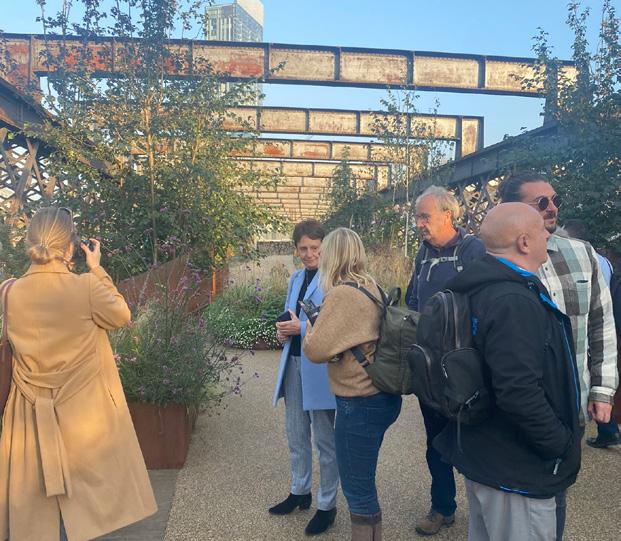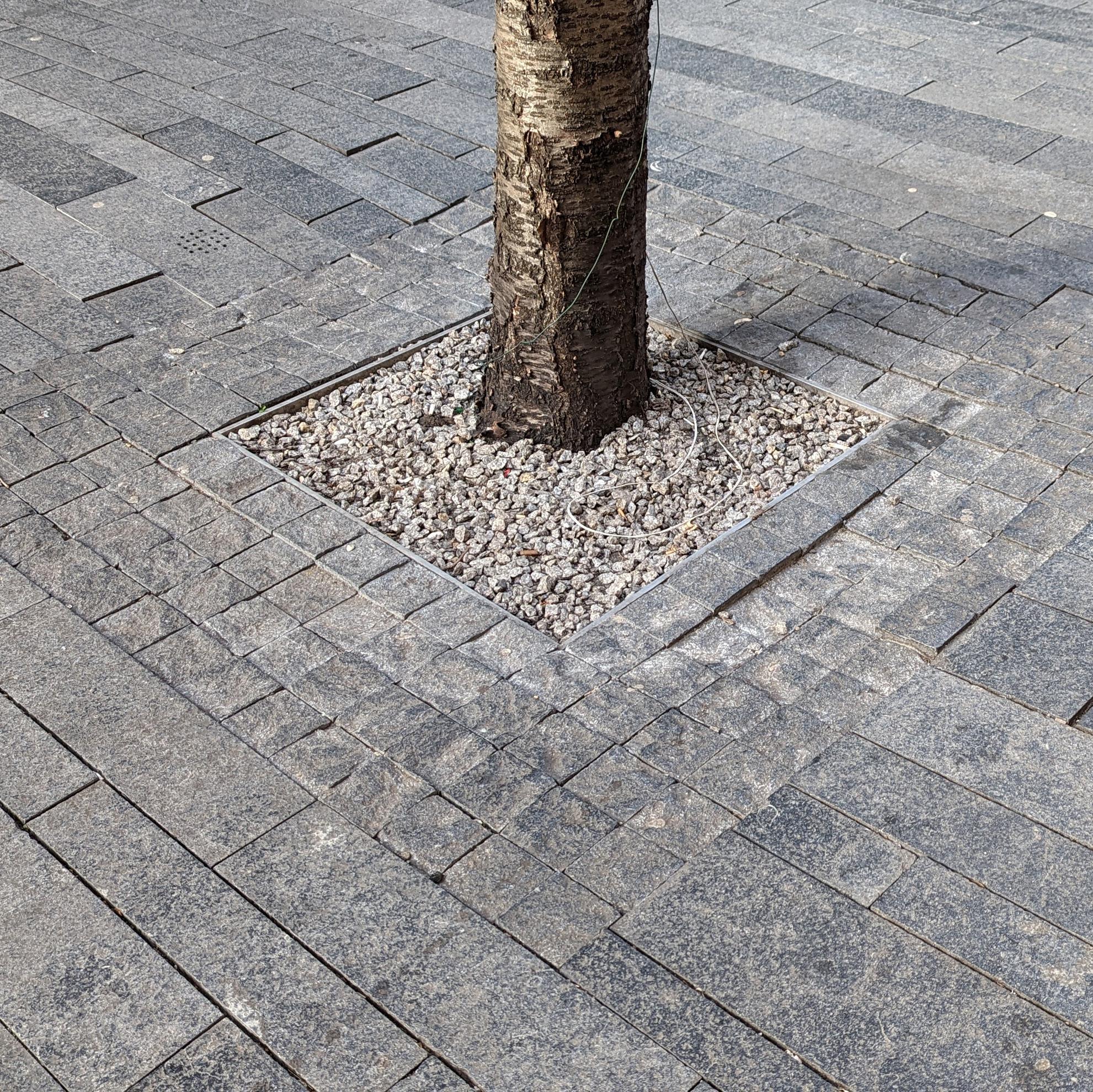
8 minute read
The Floriade 2022
Floriade 2022 Aerial View, © Peter Sheard 2022
A place of surprise, serendipity and fun, or the starting point for a brave new part of the city –the Floriade festival continues to be controversial.
The ‘Floriade 2022’ is the seventh of a series of ten yearly festivals directed at showcasing good urban design and park planning in the Netherlands where innovation and pragmatism are necessary components of all landscape interventions. These Floriades are often influential and ambitious exercises which have left a legacy of open spaces and parks; the first being in Rotterdam in 1960 which has then been followed in each decade since in locations such as Amsterdam and Venlo. This year’s model is in Almere, coincidentally the Netherland’s newest city, and represents a return to the objectives of these festivals.
In the past, the ‘Parkhaven’ in Rotterdam, the ‘Amstel Park’ in Amsterdam and the ‘Flora District Park’ in Zoetermeer all paid homage to previous Floriades’ ambition to make new parks, launch them with a six-monthly festival of horticulture, then redevelop the site with appropriate structures now adorned with shiny new open spaces.
Funded by both the state and the formidable Dutch horticultural industry, their primary aims have been to address both short-term commercial issues and increasingly, long-term environmental issues of more pressing urgency. As such, this promotion of human and natural ecology is then intended to be valued by the local constituency, the inheritors of the new spaces, and should improve the wider environment.

Experimental Hemp Site Bridge
© Peter Sheard 2022
Additionally, Almere’s Floriade explores new responses to human impact on the natural world head-on under the banner of ‘finding systematic innovations and solutions for sustainable, liveable cities’, which respond to the consequences of an evolving climate, water management, resiliency and responsibility. The Floriade’s moniker defines this as ‘Growing Green Cities’ under the headings of food, health, energy, and green.
So, what of Almere? Anecdotally described as ‘boring’ or ‘like Milton Keynes’ (both of which are slightly Almere’s experiment with innovation, sustainable technologies and social enrichment is attempting to avoid an atmosphere of faceless suburbanism unfair), the city lies East of Amsterdam on the Flevoland polder, the largest artificially-made island in the world, connected by the A6 highway and surrounded by lakes and waterways.
The Floriade site itself is a partial peninsula, lying on the Weerwater lake, directly opposite the growing city and its commercial centre with its 200,000 inhabitants. There are plans to house another 130,000 people in over 600 homes with new standards of sustainable building and open space provision by 2030 so the pressures on the land are considerable. And Almere faces lots of pressures. Not least being exposed and largely featureless, lying as it does in what 40 years ago was sea. Nothing about the city has a patina of age or familiarity, so ‘placemaking’ as well as the environmental objectives have been at the forefront of the planners’ thoughts.

Mycelium or Living Pavilion Detail
© Peter Sheard 2022
A significant aspect of Almere itself (and its Floriade) is that it is something of an innovation hub in terms of town planning, architecture, and landscape interventions. Various new neighbourhoods are testing new methods of planning, like the ‘Oosterwald’ district and its urban agriculture, mixing housing and growing plots; or the ‘Regenboorgbuurt’ rainbow neighbourhood, using colour and form to provide identity including imposing red apartment blocks echoing the silos of old; or the Almere port with its mix of low-cost homes, urban woodlands and inland beaches.
Almere’s experiment with innovation, sustainable technologies and social enrichment is attempting to avoid an atmosphere of faceless suburbanism with the adoption of Ebenezer Howard’s Garden City principles, fused with the Dutch planners’ deep respect for the landscape and its challenging natural systems. The Floriade therefore fits with this spirit of newness and verve: oft quoted as ‘Almere is not an experimental city exactly but a city where experiment can happen’.

Wool and Dyeing Pavilion Detail
© Peter Sheard 2022
The layout of the Floriade is certainly uncompromising (by Rotterdam based master planners and architects MVRDV). It is a Mondrianlike grid of orthogonal plots, paths and routes extending out as a peninsula into the water organizing the various plots, events, and future districts. Both above and below ground, the supporting technologies for energy and water are thus disposed, creating the future residential district (‘Hortus’), a Flevoland polder is the largest artifically-made island on earth university (‘Flevo Campus’) and commercial space. Sustainable energy in the form of an efficient district energy system is then integrated across this ‘smart-grid’ heating and cooling network, ensuring that the city’s future expansion is balanced.
The grid is overlaid by an ambitious arboretum, an alphabetically arranged library of trees and plants across its 45 hectares, turning the whole site into a living laboratory. It’s a little like a green barcode and is the most striking element of the Floriade. The principal aim is to help define how a green city should evolve and behave: a city which protects and enhances ecosystems and biodiversity and, as it grows and develops, can also be monitored and assessed to predict change and ensure resiliency. As such, Almere’s expansion is taking on a new form and purpose, which in turn will inform future decisions in a changing world. Other innovations defined by the grid are the ‘Flevo Campus’, an arrangement of experimental buildings promoting sustainable food technologies and helping start-ups all centered around the stunning ‘Aeres’ university building a shining example of its type.

Mycelium or Living Pavilion Detail
© Peter Sheard 2022
Additionally, on a site with so much water, bridges are vital; at Almere they are all constructed in recycled concrete and other materials; incorporating solar panels and use materials like hemp and rebar in an innovative way, all of which are monitored for long-life suitability. Many of these are striking and have a beauty all of their own.
Even the connecting A6 highway is the Netherlands’ first energy-neutral road, generating energy for its own needs and offering extensive habitat enhancements.
The blue/green framework is of course significant in such a locality adopting an extensive district heating system combined with monitored water run-off and areas of flooding. Green zones penetrate deep into the site and are linked to habitat enhancement, planned future blue zones and urban forests extending way beyond the Floriade’s boundaries.
Within the Floriade plots themselves are the usual festival jollities (national pavilions, horticultural displays, and the like) all of which have a slightly serious, though wellintentioned educational quality to them and help promote an understanding of what Almere is doing and, what is more, trying to be.

Upcycled Site Bridge Detail
© Peter Sheard 2022
My own personal reflections on the Floriade are mixed. Past Floriades left an obvious legacy: a beautiful park. Almere’s legacy will be a city district. The expo is just a little short on surprise, serendipity, and fun; the innovative arboretum has yet to mature fully so its full impact appeared a little subdued; the strong plan form, so evident in the promotional imagery, didn’t always have the same impact on such a board-flat site; and the absence of site features (the ‘Green Island’ woodlands being the exception) rather crystalized the Floraide’s (and indeed Almere’s) challenges. I longed to come across a sweeping landscape gesture to lift the heart (like 2002’s pyramidal hill and grand lakes) but found instead another avenue. Paradoxically, the temporary festival was almost lacking, overwhelmed by its legacy factor: it was a ‘pop-up’ festival with no waste and few unnecessary frills. At this point, it is worth stating that this probably represents my anachronistic expectations at play. This Floriade is setting a new agenda where a legacy park alone does not cut it anymore.
The Floriade was brave and unique, helping to carry on Almere’s desire to become a place in its own right and not just an adjunct to Amsterdam, which is a challenge indeed. The expo was only a part of what the city is trying to do, and explaining and promoting its ambitions are a very important part of getting Almere’s residents to understand and embrace its future. This requires the spirit and integrated planning that are embodied in the Floriade execution: namely, putting landscape and the natural world at the heart of the place. Almere potentially represents a bold sea change in future expos where long-term legacy is considerably more overt and integrated from inception rather than a mere zone once the festival is long gone. Almere’s long-term ambitions are very much in evidence in its exposition, which, given the objectives of the whole event, was probably exactly what it needed to be.

Peter Sheard CMLI, author
A landscape architect and a member of the Landscape Institute Editorial Advisory Panel.










